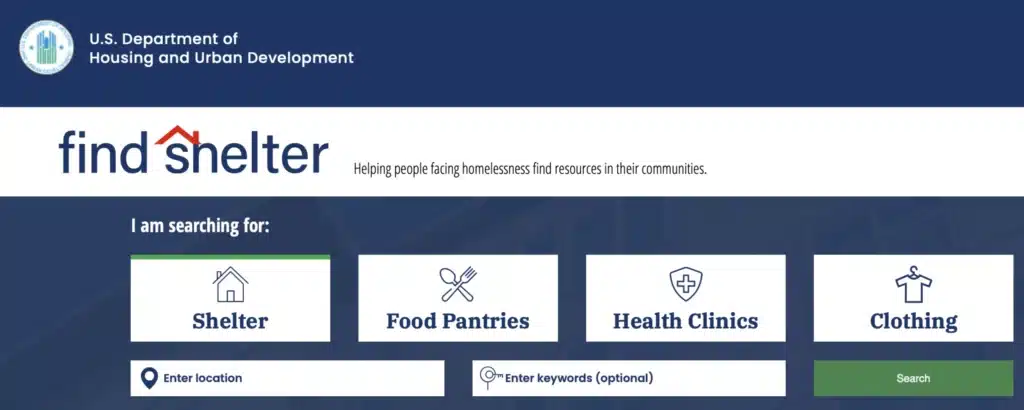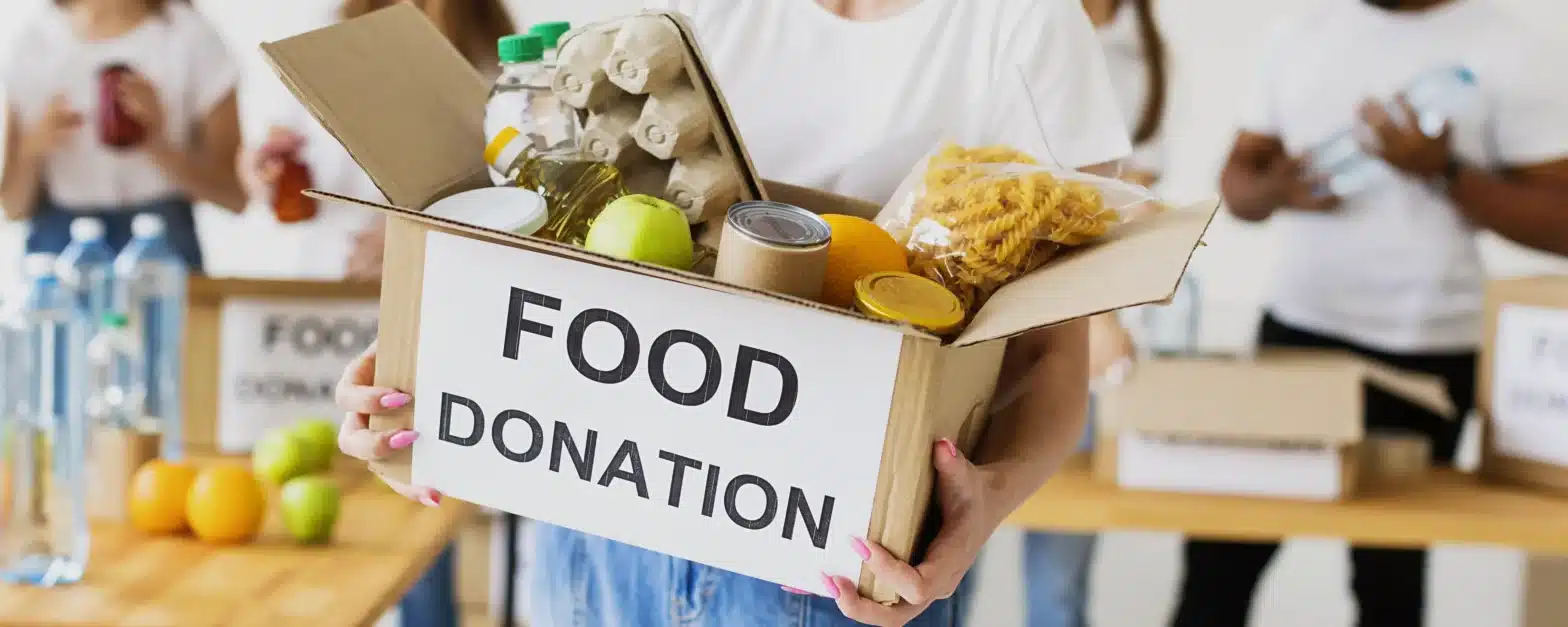If you are struggling to afford food or clothing, the HUD Find Shelter tool can help. Many people think this government resource is only for finding emergency shelters, but it also connects you with food pantries, soup kitchens, and clothing banks in your area. These services are free and available to anyone in need, whether you’re experiencing homelessness, facing financial difficulties, or simply going through a tough time.
Food and clothing are basic needs, but not everyone can afford them. Grocery prices have gone up, and buying new clothes is expensive. If you’ve lost your job, are waiting for benefits, or just need extra support, food pantries and clothing banks can help you get through tough times.
This guide will show you how to use HUD’s Find Shelter tool to locate free food and clothing services, what to expect when you visit, and other ways to get assistance.
How Do Food Pantries and Soup Kitchens Work?
Food Pantries
Food pantries provide free groceries for individuals and families who need assistance. Some allow you to choose your own food, while others give out pre-packed bags. You may receive:
- Fresh fruits and vegetables
- Canned goods and dry food
- Dairy products like milk and cheese
- Meat and protein sources
- Bread and bakery items
Some food pantries require proof of residency or income, but many serve anyone who asks for help. If you’re unsure, call ahead and ask about their policies.
Soup Kitchens
Soup kitchens provide hot meals for people in need. They usually serve lunch and dinner at set times each day. These meals are free, and you don’t need to bring anything—just show up and eat. Some soup kitchens also offer takeaway meals.
How Do Clothing Banks Work?
Clothing banks provide free clothing for adults and children. Many offer:
- Warm coats, hats, and gloves for winter
- Everyday clothing like jeans, shirts, and shoes
- Work attire for job interviews
- School uniforms and children’s clothing
Some clothing banks let you choose items like in a regular store, while others provide pre-packed bags based on your size and needs.
What to Expect When Visiting a Food Pantry or Clothing Bank
Each location operates differently, but here are some things to keep in mind:
- Bring an ID if required – Some food pantries ask for proof of residence or identification.
- Arrive early – Some locations have long lines, especially on busy days.
- Be prepared for limits – Many places have rules on how much food or clothing each person can take.
- Ask about additional services – Some organizations offer more than just food and clothing, including job training, medical help, and shelter referrals.
How to Find Food and Clothing Assistance Using HUD’s Find Shelter Tool

The HUD Find Shelter tool is easy to use and works on any device. Follow these steps to locate food pantries and clothing banks near you:
- Go to the website – Visit HUD’s Find Shelter page.
- Enter your location – Type in your city, state, or ZIP code.
- Choose a category – Select either “Food Pantries” or “Clothing Assistance.”
- Find a location – The tool will list organizations near you, along with their addresses, phone numbers, and websites (if available).
Once you find a food pantry or clothing bank, call ahead to check their hours and any requirements. Some places require ID, while others serve anyone in need.
Other Ways to Find Free Food and Clothing
If you can’t find a pantry or clothing bank through HUD’s tool, there are other resources available.
Call 211 for Local Assistance
Dial 211 to connect with a local resource specialist who can help you find food and clothing assistance in your area.
Check Local Churches and Charities
Many churches, mosques, and synagogues run food programs and clothing drives. Some well-known organizations include:
- The Salvation Army – Offers food pantries, free clothing, and emergency assistance.
- Catholic Charities – Provides meals, clothing, and shelter for those in need.
- Feeding America – Runs a network of food banks across the U.S.
Visit Community Centers
Many community centers and non-profit organizations run weekly food distributions and clothing giveaways. These events are often advertised at libraries, schools, and local social service offices.
Look for Government Assistance Programs
If you need long-term food support, you may qualify for:
- SNAP (Food Stamps) – Monthly benefits to buy groceries.
- WIC (Women, Infants, and Children Program) – Help for pregnant women and young children.
- School Meal Programs – Free or reduced-cost meals for kids at school.
Check with your local Department of Social Services to see if you qualify.
Visit a Homeless Shelter or Health Clinic
Some homeless shelters and health clinics also provide food and clothing assistance. If you need temporary housing or medical care, check out these guides:
- Find Emergency Shelter Using HUD’s Find Shelter Tool
- Find Free or Low-Cost Medical Care Using HUD’s Find Shelter Tool
Why Food and Clothing Assistance Matters
Access to free food and clothing can help people get back on their feet. When someone doesn’t have to worry about their next meal or how to dress for cold weather, they can focus on finding work, securing housing, or improving their health.
Many food pantries and clothing banks are run by charities and community organizations. These programs rely on donations and volunteers, and their availability can change based on funding. To see how government policies might impact these services, check out Trump and Musk’s Plans Could Impact Affordable Housing.
If you’re also struggling with housing, some charities provide free or affordable housing assistance. Read more about them here: Top 5 Charities Providing Free Housing for Those in Need.
Final Thoughts
If you need food or clothing, help is available. The HUD Find Shelter tool makes it easy to locate food pantries, soup kitchens, and clothing banks in your area. Just enter your location, select the service you need, and contact the nearest organization.
If you don’t find what you need, call 211, check local charities, or visit a community center. There are many programs dedicated to helping people in crisis.
No one should have to go hungry or go without basic clothing. Take advantage of these free resources and get the support you need.


